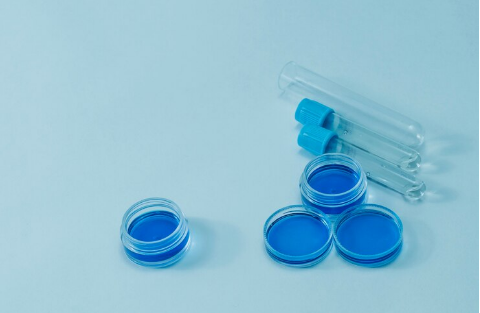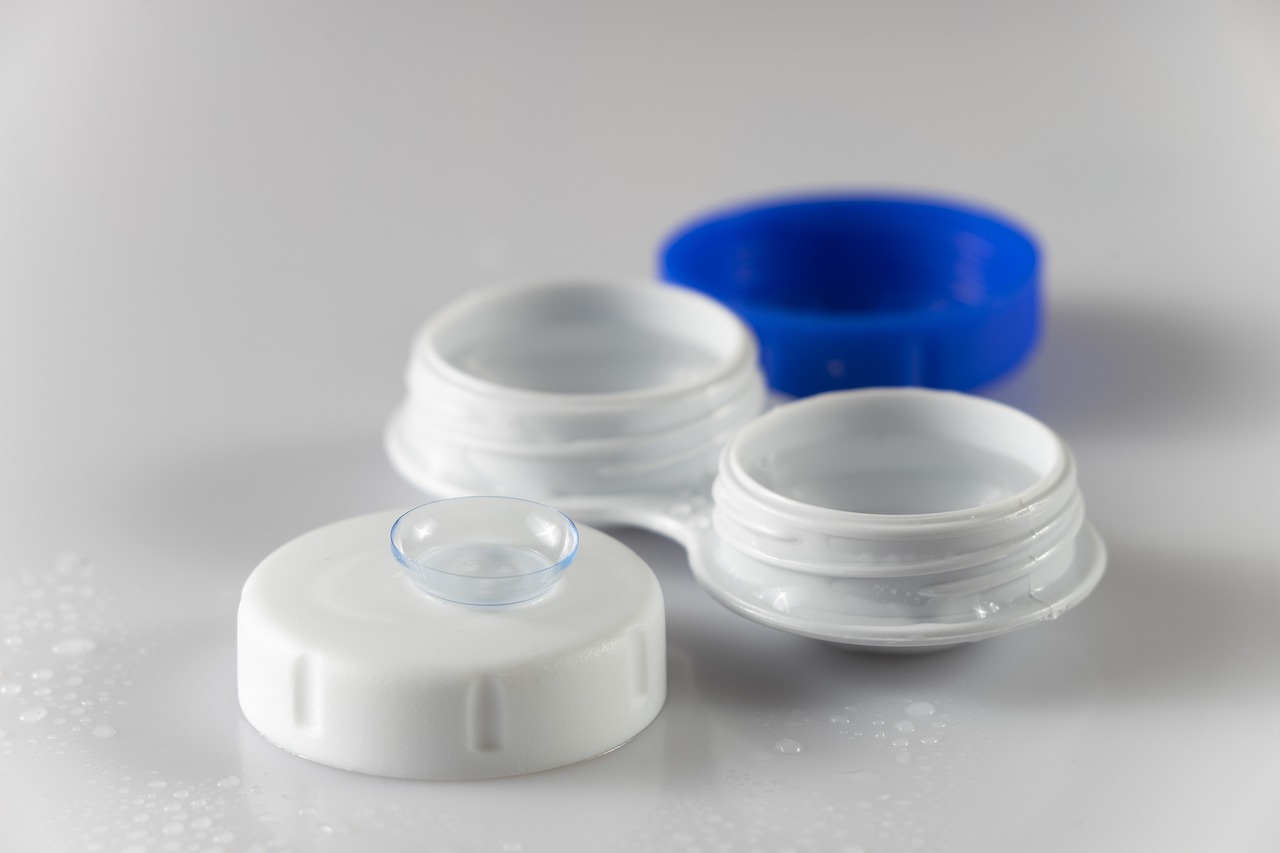Daily vs. Monthly Contact Lens: Which Is Best for You?
Over 24 million Americans wear contact lenses, which are useful for those who exercise frequently or prefer not to wear glasses. However, regular replacement is essential for maintaining eye health.
Table of Contents
- Daily Contacts
- Advantages of Daily Contacts
- Disadvantages of Daily Contacts
- Monthly Contacts
- Advantages of Monthly Contacts
- Disadvantages of Monthly Contacts
- Factors To Consider When Choosing Between Daily and Monthly Contacts
- How Long Can You Wear Monthly vs. Daily Contacts?
- Switching From Monthly to Daily Contacts?
- Monthly vs. Daily Contacts: Final Words
The replacement schedule depends on whether you opt for daily or monthly contact lenses. Each type has its own advantages and disadvantages, which should be considered when making a choice.
Daily Contacts
Daily contact lenses are designed for single-day use. Once you remove them, you simply throw them away—no need for cleaning, disinfecting, or storing. If you're looking for a low-maintenance option, daily contacts could be a great fit for your lifestyle.
Advantages of Daily Contacts
- Lower Risk of Infection
- No Buildup: Daily lenses are worn once, so they don’t get time to collect things like proteins or allergens. This helps prevent discomfort and irritation.
- No Need for Cleaning: Since you use a fresh pair each day, there’s no need for cleaning, which reduces the chance of germs building up and causing an infection.
- Easy to Use
- No Cleaning Required: Daily lenses are convenient because you don’t need to clean them. Unlike monthly lenses, which need to be disinfected each day, daily lenses are simply thrown away after use.
- No Storage: You don’t need a lens case or cleaning solutions. This makes them great for people who travel or don’t want to spend time on lens care.
- Quick Routine: With no cleaning involved, your routine is faster. You just put them in and throw them away when done.
- Cost-Saving Over Time
- Fewer Supplies: While daily lenses may seem more expensive upfront, you save money by not needing cleaning solutions or storage cases.
- Simple Maintenance: Since there’s no need for extra products, daily lenses can actually be cheaper for some users in the long run.
- Better for Your Eyes
- No Irritating Chemicals: Some people are sensitive to the chemicals in contact solutions used for monthly lenses. With daily lenses, you avoid this, so your eyes are less likely to get irritated.
- Healthier Eyes: Wearing a new pair of lenses each day helps maintain a healthy tear film, which is important for keeping your eyes comfortable.
- Environmentally Friendly
- Recycling Available: Some brands offer recycling programs for daily lenses, so instead of tossing them in the trash, you can help reduce waste.
- Less Plastic and Water Use: Since you don’t need cleaning solutions or storage cases, you’re using less plastic and water, making daily lenses a more eco-friendly option.
Disadvantages of Daily Contacts
Thinner Material and Risk of Tearing
Daily contact lenses are designed using thinner materials, which makes them more comfortable but also more prone to tearing. Because of this, it’s always a good idea to carry a spare set of lenses with you and have a backup pair of eyeglasses for emergencies. The delicate nature of daily lenses means they need to be handled carefully to avoid damage.
Upfront Cost vs. Long-Term Savings
The initial cost of daily contacts is higher than monthly ones. You’ll be paying more upfront for a large supply of daily lenses. However, in the long term, you may save money since there’s no need to buy contact lens solutions, cases, or other cleaning materials. This can offset the higher initial cost for some people.
Waste and Environmental Impact
One downside of daily lenses is that they create more daily waste since each pair is discarded after one use. While this may seem like a lot, monthly lenses also contribute to waste, particularly from plastic bottles of cleaning solutions. To reduce your environmental impact, it's important to properly dispose of lenses by avoiding flushing them and recycling when possible.
Monthly Contacts
Monthly contact lenses are designed to be used for up to 30 days. Each night, they need to be taken out, cleaned, disinfected, and stored properly. After the 30-day period, you simply discard the lenses and start with a new pair.
Advantages of Monthly Contacts
Cost-Effectiveness
Monthly contact lenses are usually more affordable in the long run compared to daily lenses. While the initial cost might be similar, you use each pair of monthly lenses for an entire month. This means you only need to purchase a new pair once a month, rather than every day. As a result, the overall expense is lower.
Reduced Waste
With monthly lenses, you discard only one pair per month. This approach produces less waste compared to daily lenses, where you throw away a new pair each day. By reducing the number of lenses disposed of, monthly lenses help decrease your environmental footprint.
Durability
Monthly lenses are made from thicker materials, which makes them more resistant to damage and tearing. This durability means they are less likely to break or get scratched during normal use, making them a practical choice for many wearers.
Disadvantages of Monthly Contacts
Durability and Comfort
- Material Strength: Monthly contact lenses are built to last longer, so they are made from stronger materials. This can make them feel thicker and potentially less comfortable, especially for those with sensitive eyes.
Maintenance and Cleaning
- Debris Accumulation: Because monthly lenses are worn for extended periods, they can accumulate debris. This can interfere with clear vision.
- Cleaning Requirements: Proper cleaning and storage are essential to maintain clear vision. Monthly contacts require regular cleaning with lens solutions, which adds to the maintenance routine.
Cost and Time
- Additional Costs: The need for cleaning solutions means higher overall costs compared to daily lenses.
- Time Commitment: Maintaining monthly lenses involves more time and effort due to the cleaning and storing processes.
Factors To Consider When Choosing Between Daily and Monthly Contacts
Choosing between daily and monthly contact lenses depends on various factors related to your needs and lifestyle. Here’s a guide to help you decide:
Prescription and Eye Conditions
- Suitability: Your vision needs and any eye conditions will influence whether daily or monthly lenses are best for you. Daily lenses suit most vision corrections but may not be available for complex prescriptions. Consult your optometrist to find the right fit.
- Prescription Limits: Not all prescriptions are available in daily lenses. In such cases, monthly or specialty lenses may be recommended.
Comfort
- Daily Lenses: Daily contacts are generally very comfortable and made from materials that allow oxygen to reach your eyes, such as hydrogel or silicone hydrogel. Most people find them easy to adjust to.
- Comfort Issues: While modern contacts are comfortable, discomfort can occur. If you experience any issues, it's important to consult with your optometrist.
Cost
- Daily vs. Monthly: Daily lenses typically cost around $1 per day, whereas monthly lenses range from $15 to $25 per month. Assess your budget to determine what fits best.
Lifestyle and Maintenance
- Daily Contacts: Ideal for those with a busy lifestyle or who prefer minimal maintenance. You can simply discard them at the end of each day and use a fresh pair the next morning.
- Monthly Contacts: Better for those who don’t mind a cleaning routine and prefer not to keep a large supply of lenses. They require regular cleaning and storage but can be more economical over time.
Each type of lens has its own advantages, so consider your personal needs and daily habits when making your choice. Also read How to Rehydrate And Clean Contacts without a solution?
How Long Can You Wear Monthly vs. Daily Contacts?
Most soft, disposable contact lenses are designed for wear between 12 to 16 hours each day. However, it's important to check with your optometrist for specific recommendations, as the ideal wearing time can vary by lens type, brand, and individual eye conditions.
Always remove your contacts before going to bed. This practice helps your eyes rest and reduces the risk of infection.
Switching From Monthly to Daily Contacts?
Yes, you can switch from monthly to daily contact lenses with your optometrist’s approval. The process of using daily contacts is similar to monthly ones—putting them in and taking them out is the same.
However, it’s important to consult your optometrist before making the switch to ensure daily lenses are right for you.
Monthly vs. Daily Contacts: Final Words
Choosing between monthly and daily contact lenses depends on three main factors: your prescription, your lifestyle, and your optometrist’s recommendation. Both types have their advantages and disadvantages, so the best choice is the one that fits your specific needs and preferences.



